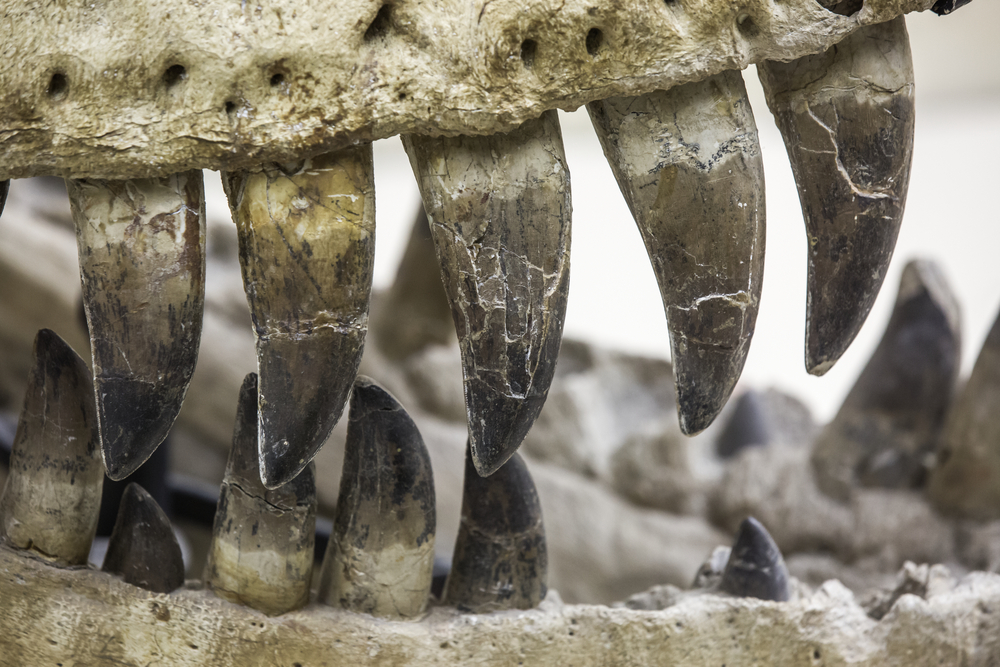Tyrannosaur Teeth Fuel Rare Fossil Find in England
Dinosaur fossils have been dug up across the world, but one of the newest discoveries involves a ferocious creature with a familiar name that left its teeth behind in coastal England. Researchers recently unearthed fossil evidence denoting the presence of Tyrannosaurs in the Bexhill-on-Sea region of East Sussex, along the southern coast of England.A December 2024 study published in Papers in Paleontology details the process leading researchers to determine that a slew of dinosaur predators stomped along the Bexhill-on-Sea region around 135 million years ago.Theropods Along the CoastWith the help of a local retired quarryman who collected numerous specimens from Ashdown Brickworks the site containing the fossilized dinosaur teeth examined in the study researchers determined the presence of Tyrannosaurus, along with spinosaurs and members of the Velociraptor family. These dinosaurs are all classified as theropods, which were mostly carnivorous.Theropods, according to the researchers, are rare in the Cretaceous sediments of southern England, making the Bexhill-at-Sea dinosaurs noteworthy. Normally, paleontologists have their sights set on the Isle of Wight, a small island on the English Channel that has turned out to be a treasure trove of fossils more than 20 types of Early Cretaceous dinosaurs have been found on the island, plus fossils of other prehistoric animals and even tools from prehistoric humans.The Significance of Theropod TeethThe new dinosaur discoveries can be attributed to collections of theropod teeth found in sediment. Studies involving these prehistoric creatures often rely on teeth above all else; a durable enamel coating helps teeth fossilize reliably, although enamel thickness differs among dinosaur species.Dinosaur teeth are tough fossils and are usually preserved more frequently than bone. For that reason, theyre often crucial when we want to reconstruct the diversity of an ecosystem, said Chris Barker, visiting researcher at the University of Southampton and lead author of the study, in a statement. Theropod teeth can vary in terms of their size, shape, and the serrated edges that helped them tear prey apart.Assigning isolated teeth to theropod groups can be challenging, especially as many features evolve independently amongst different lineages. This is why we employed various methods to help refine our findings, leading to more confident classifications, said Lucy Handford, a co-author of the study and a PhD candidate at the University of York, in the statement.Fossil LocationThe tyrannosaur teeth in the Ashdown Brickworks turned out to be fortuitous find, as researchers say the dinosaur group hadnt previously been identified in sediments of this age and region. These fossils originated from the Valanginian period (139.8 million years to 132.9 million years ago) during the Early Cretaceous. The Ashdown Brickworks is part of the Wadhurst Clay Formation, a Valanginian Age portion of the larger Wealden Group of rock strata along southern England.Southern England has an exceptionally good record of Cretaceous dinosaurs, and various sediment layers here are globally unique in terms of geological age and the fossils they contain, said Darren Naish, a co-author of the study, in the statement.Tyrannosaur RelativesAlthough the Tyrannosaurs at Bexhill-on-Sea were formidable predators, likely hunting smaller dinosaurs and other reptiles in the floodplain habitat, they didnt possess the same colossal stature as their relative, Tyrannosaurus rex. Based on analysis of the fossils, they would have been a third of the size of a T. rex.Previous evidence has established that T. rex lived in western North America, with fossils found in U.S., states like Montana and South Dakota and Canadian provinces like Alberta and Saskatchewan. Many T. rex relatives also once roamed Asia, in northern China and Mongolia.The specimens found in the Wadhurst Clay Formation older than those from the Isle of Wight represent an important step in paleontology centered around southern England. Researchers say that their discovery has helped tremendously in distinguishing the theropods of this region, which were poorly known before. Article SourcesOur writers at Discovermagazine.com use peer-reviewed studies and high-quality sources for our articles, and our editors review for scientific accuracy and editorial standards. Review the sources used below for this article:University of Alberta. What do dinosaurs & dentistry have in common?Jack Knudson is an assistant editor at Discover with a strong interest in environmental science and history. Before joining Discover in 2023, he studied journalism at the Scripps College of Communication at Ohio University and previously interned at Recycling Today magazine.


